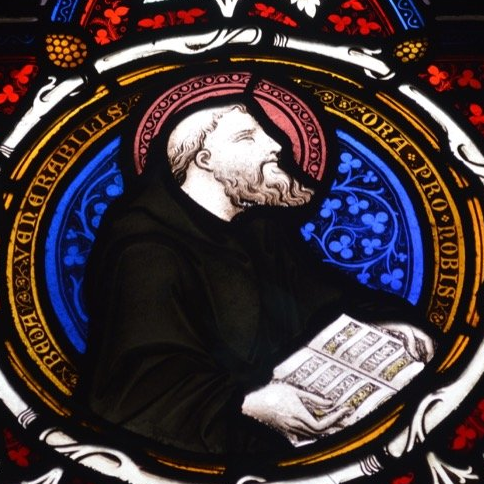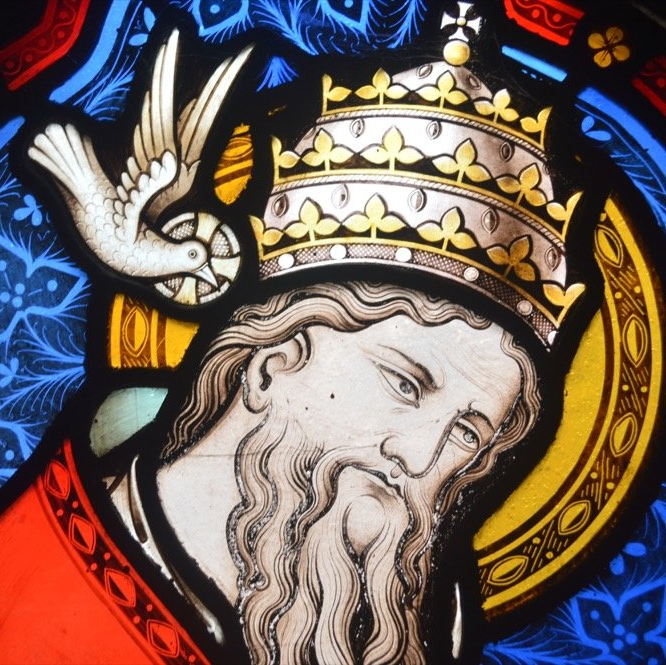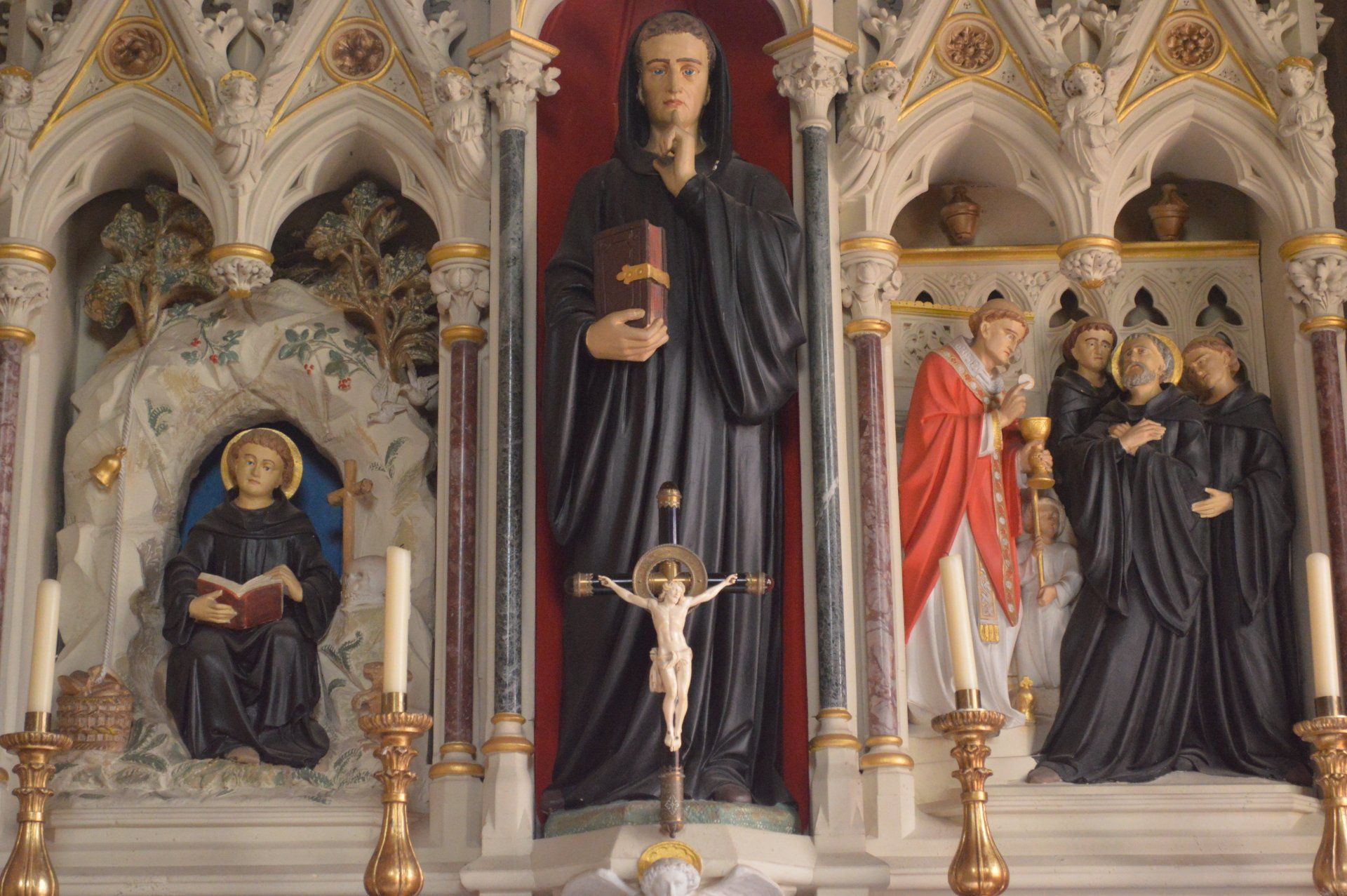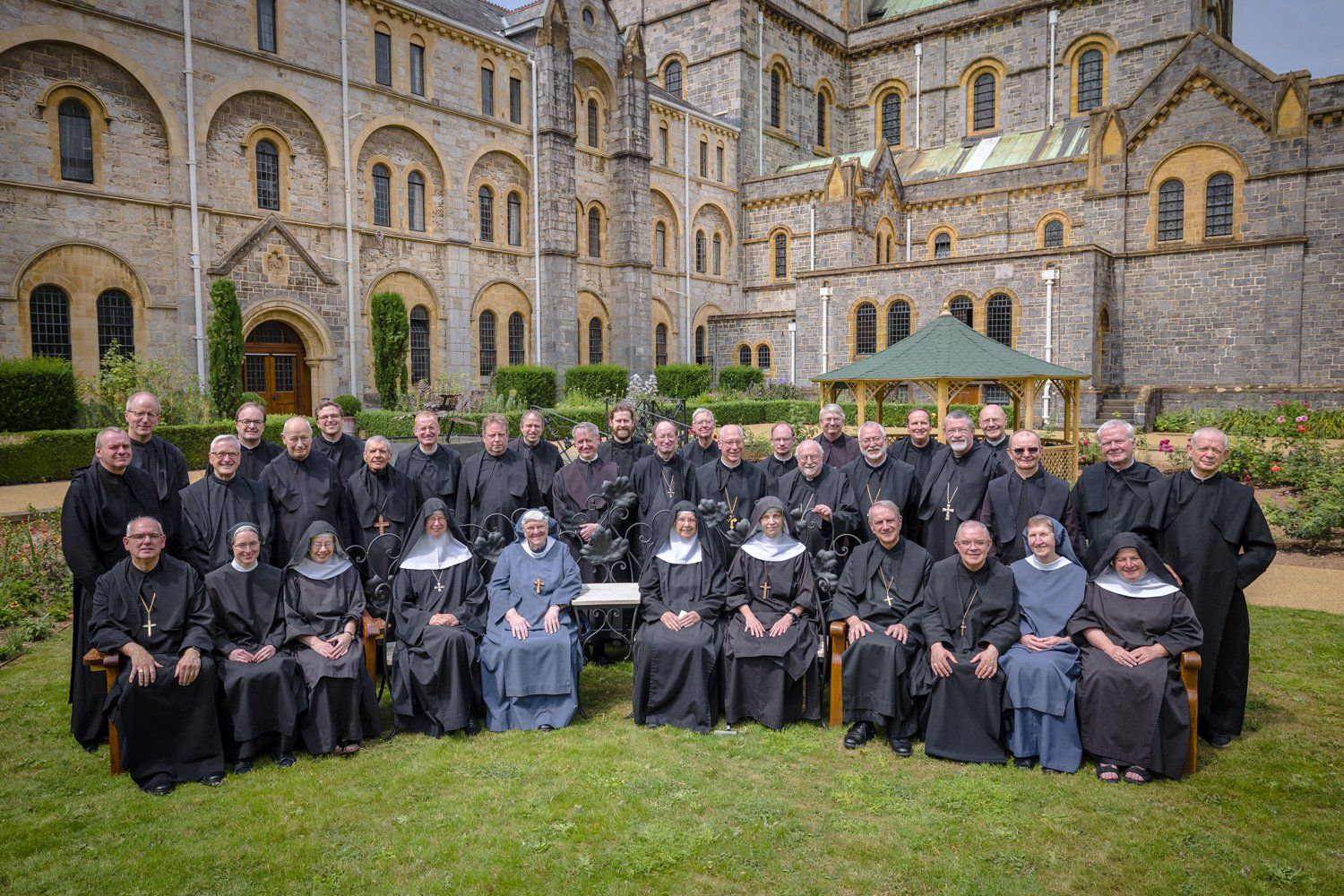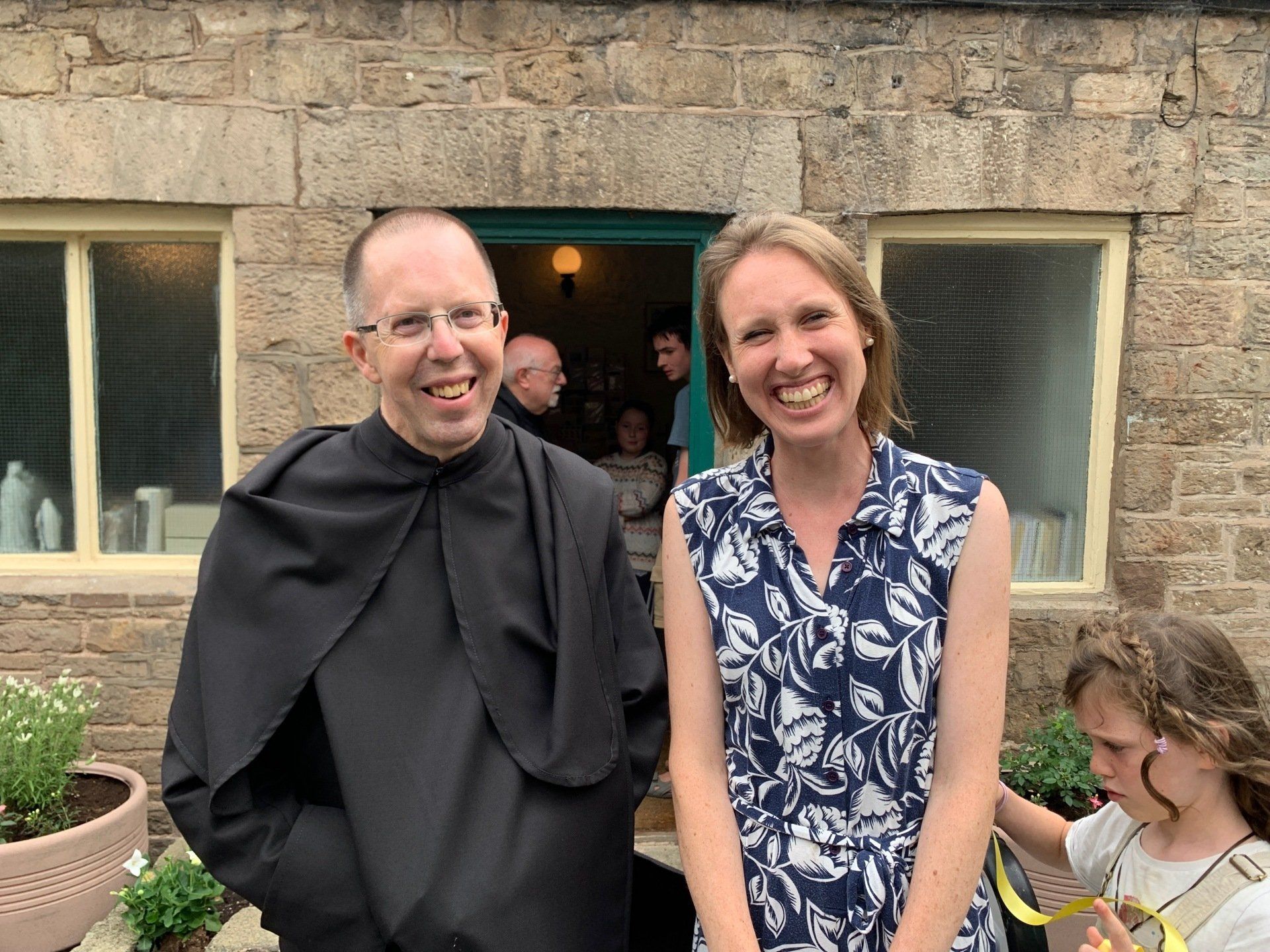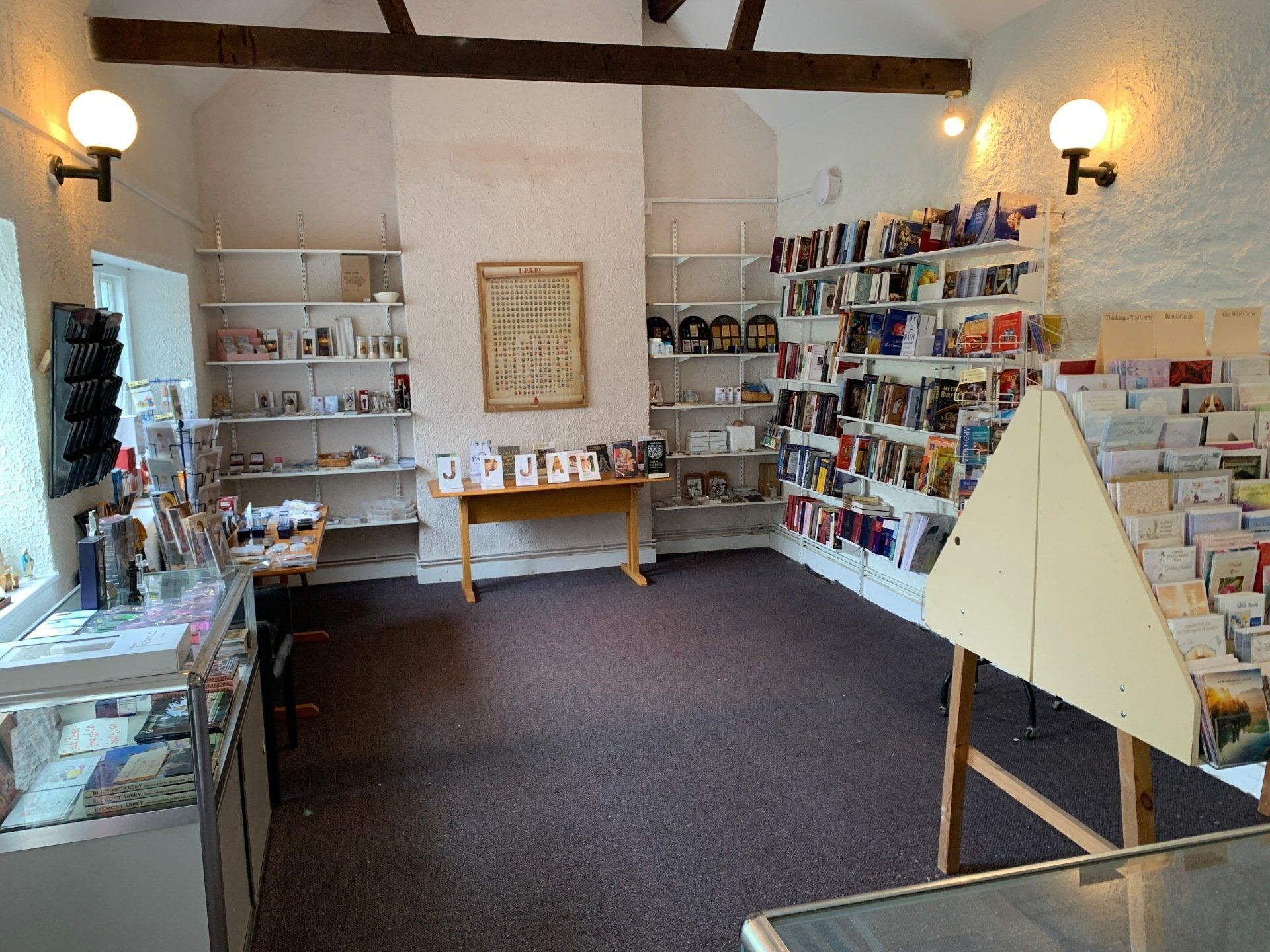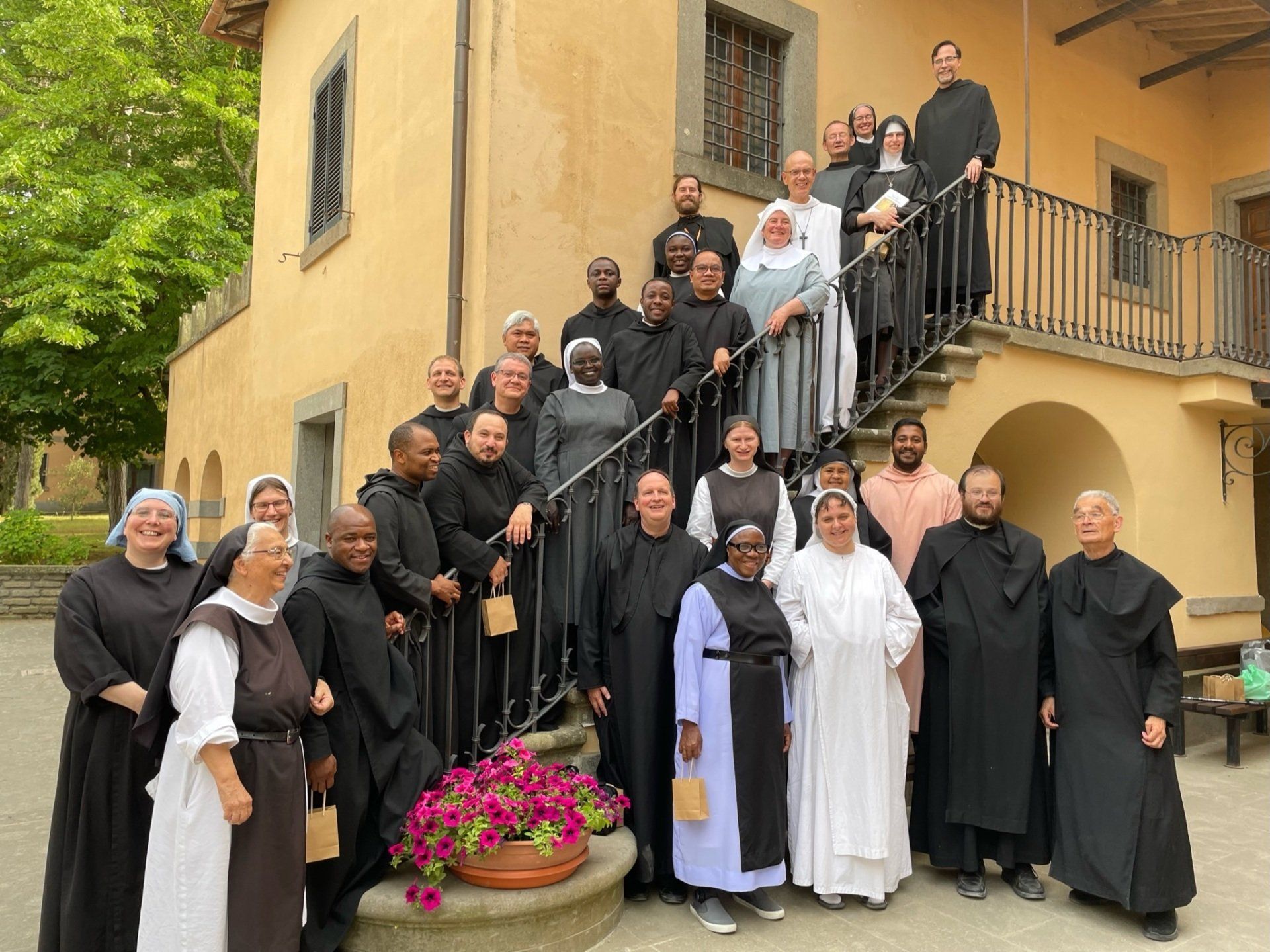History
Explore our History
In a Great Tradition: History Features
Belmont Abbey has a unique place in the recent history of the Benedictines in England and Wales, but the English Benedictine Congregation has ancient roots. Here we offer an occasional article on the culture and heritage of which Belmont is a part.
Beyond the Cloister
Here we will offer articles on monasteries, pilgrimage places and spiritual sites at home and abroad connected to our monastic and catholic history.
Belmont Abbey Hereford
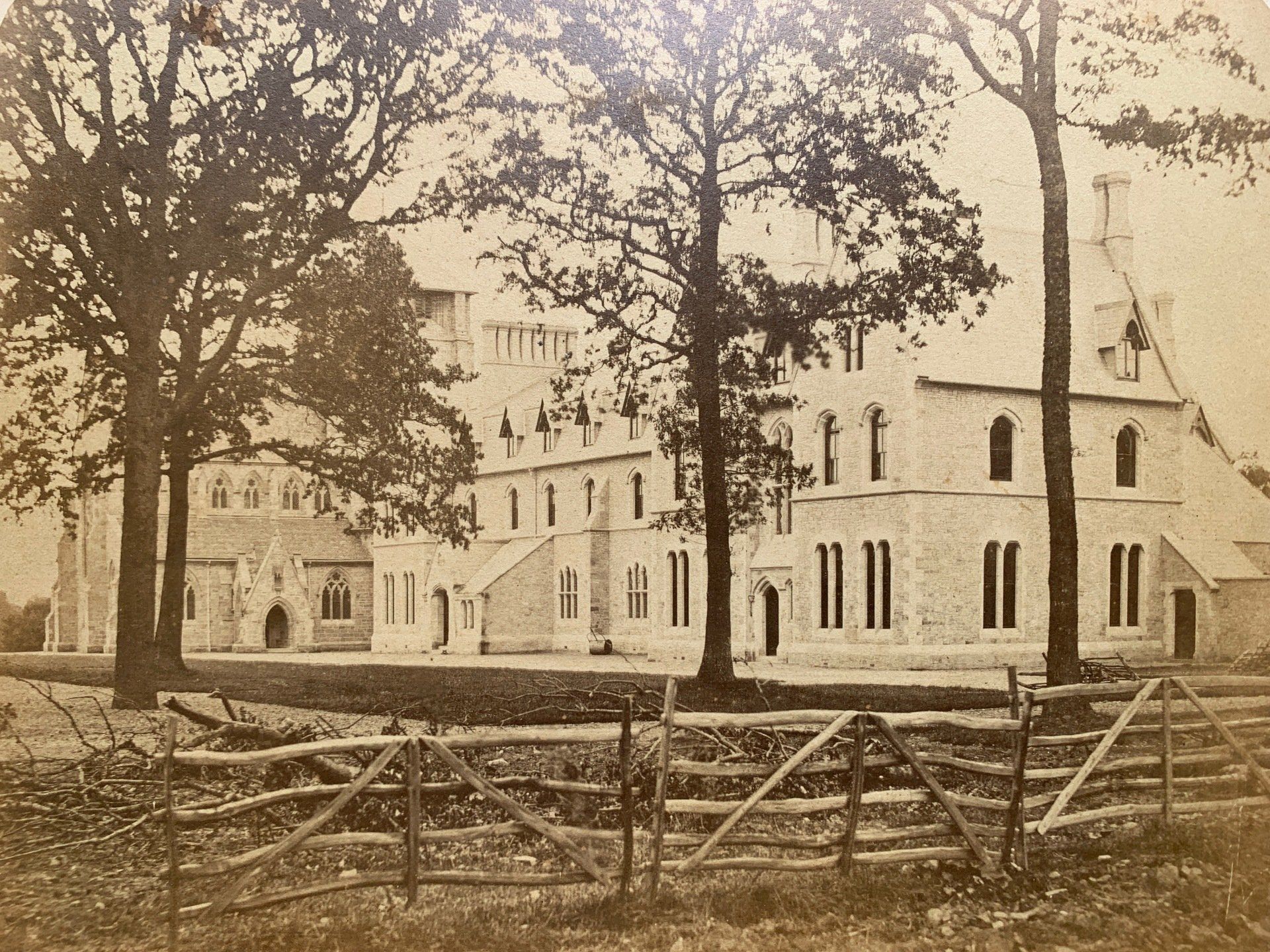
By Joanna Vials
•
13 Jun, 2021
Edward Welby Pugin, the architect, is a well-known name in the Abbey’s archives, but there is an intriguing passing reference in the contemporary records to the builder superintending the construction work in the 1850s. Fr Cockshoot, Clerk of Works for the Benedictines, commented in 1858, ‘Poor Maggs has gone off his head and has gone to the asylum.’ Since its start in mid-1857 the building work had progressed quickly but certainly not without problems. Fr Prest had been sent from Ampleforth to offer advice and, as early as September 1857, his report caused Fr Provincial Heptonstall to lament, ’Alas, that such blunders should have been made at the very commencement of Building and we the victims.’ Fr Ambrose Cotham OSB was called on to offer his opinion about ‘such blunders’; at this very time he was successfully raising the church of St Gregory the Great in Cheltenham with Charles Hansom as architect, and he had the experience of building two (small) churches in Tasmania. Despite financial and legal problems with his own builders no-one had actually ‘gone off his head’ in the process. Pugin’s designs were elaborate – even grandiose – and there seems to have been confusion in his written specifications so that liability for early mistakes was not clear. Fr Heptonstall’s letter continued, ‘Maggs and not we must or at any rate ought to repair the blunder at his own expense and if these particulars … be not in the specifications then Pugin is very much to blame.’ However, these early technical problems were resolved and by the middle of 1858 at least 40 men were working on the site. Could the stress of work at St Michael’s have caused, or at least contributed to, Austin Maggs’ breakdown? The case was widely reported in the local and national press and was carried by newspapers in France, Holland, the USA, and New Zealand. A short version of his case was given, for example in the Spectator for 5 May 1858: Mr. Austin Maggs, an architect and builder residing at Hereford, has been arrested in consequence of having sent a letter to the Queen – calling upon her to render up to him her Majesty's office as Head of the Church. "Your Majesty will please to remember that this application is registered in Heaven, and will have to be accounted for at the judgment seat of our Lord. I shall be happy to produce to your Majesty my credentials as Christ's vice-gerent on earth." The unfortunate lunatic has been very violent while in the infirmary of Hereford Gaol. The Magistrates have remanded him, in order that his relatives may be communicated with. Unsurprisingly, the fullest account was given in the Hereford Times on Saturday, 15 May 1858. The report covered the events which led to Maggs’ detention, and described at some length the background to it. Austin Maggs had successfully built up his own business from his premises in Old Market Street, Bristol. Most recently in the Hereford area he had worked as contractor for some extensive building operations in progress at the seat of Sir H G Cotterell Bart. MP at Garnons , in this county, but which, we understand, he relinquished before they were completed for want of the necessary funds to carry on the work. He was also the contractor for the Monastery for Benedictine monks in the course of erection at Belmont, near this city; but here too he got into difficulties that savour strongly of fraudulent intentions.
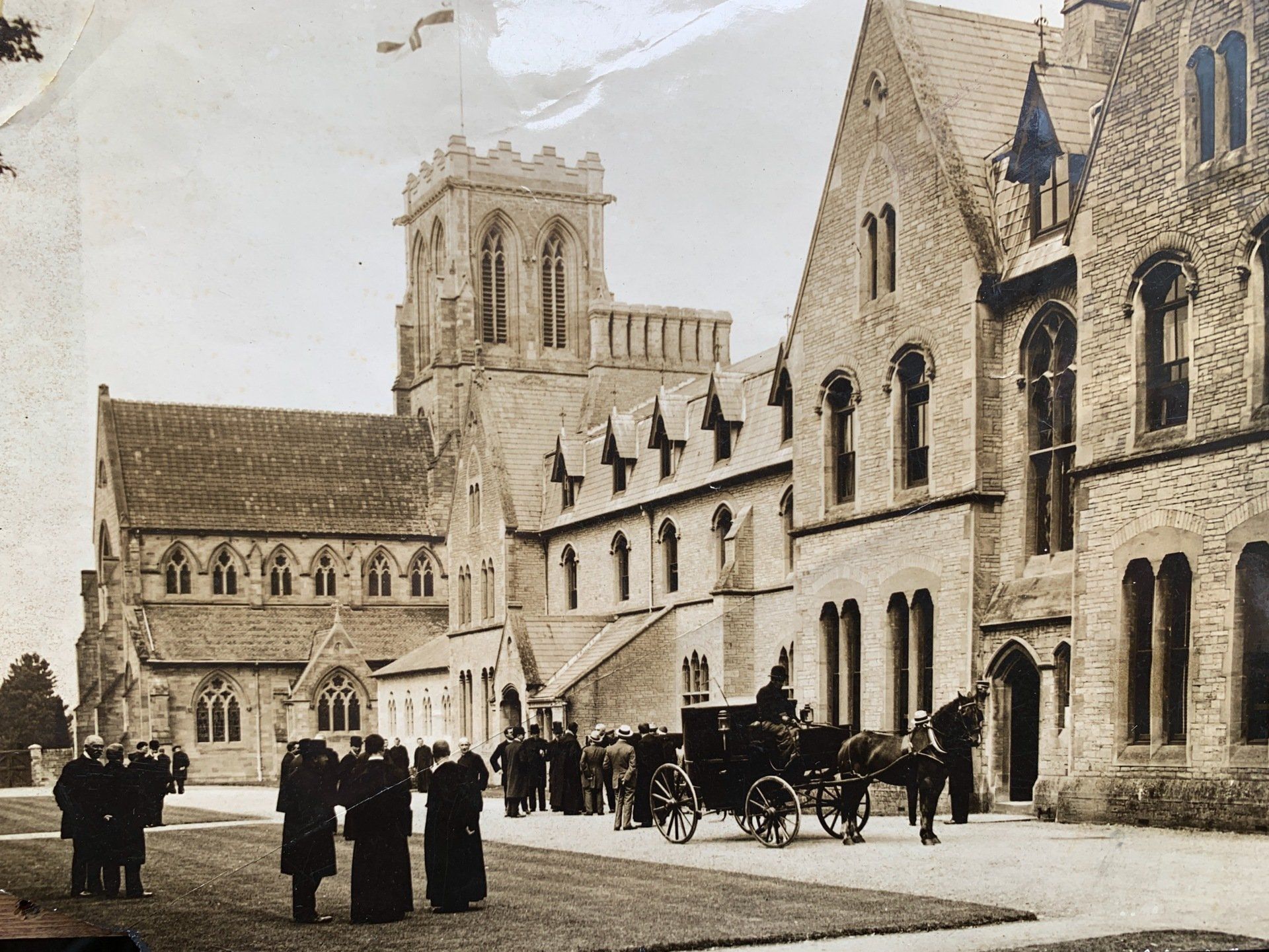
By Fr Brendan Thomas
•
22 Jul, 2020
This year we mark the Centenary of Belmont becoming an independent Abbey. (It was built and founded in 1859 and up to this point the monastery had mainly served as a Common Novitiate and House of Studies, and the church as a Cathedral). Here are some historic photographs. It is sad that we have not been able to celebrate together this Centenary as we had planned. We have dug these photos out of our archives. They reveal what Belmont looked like at different times in the past.
Pages from Monastic History
In a famous book, the monastic tradition has been described as "the love of learning and the desire for God." For offer an occasional article for those who would like to know more about the founders and saints, mystics and writers, monasteries and movements that are at the root of Belmont's Benedictine tradition.
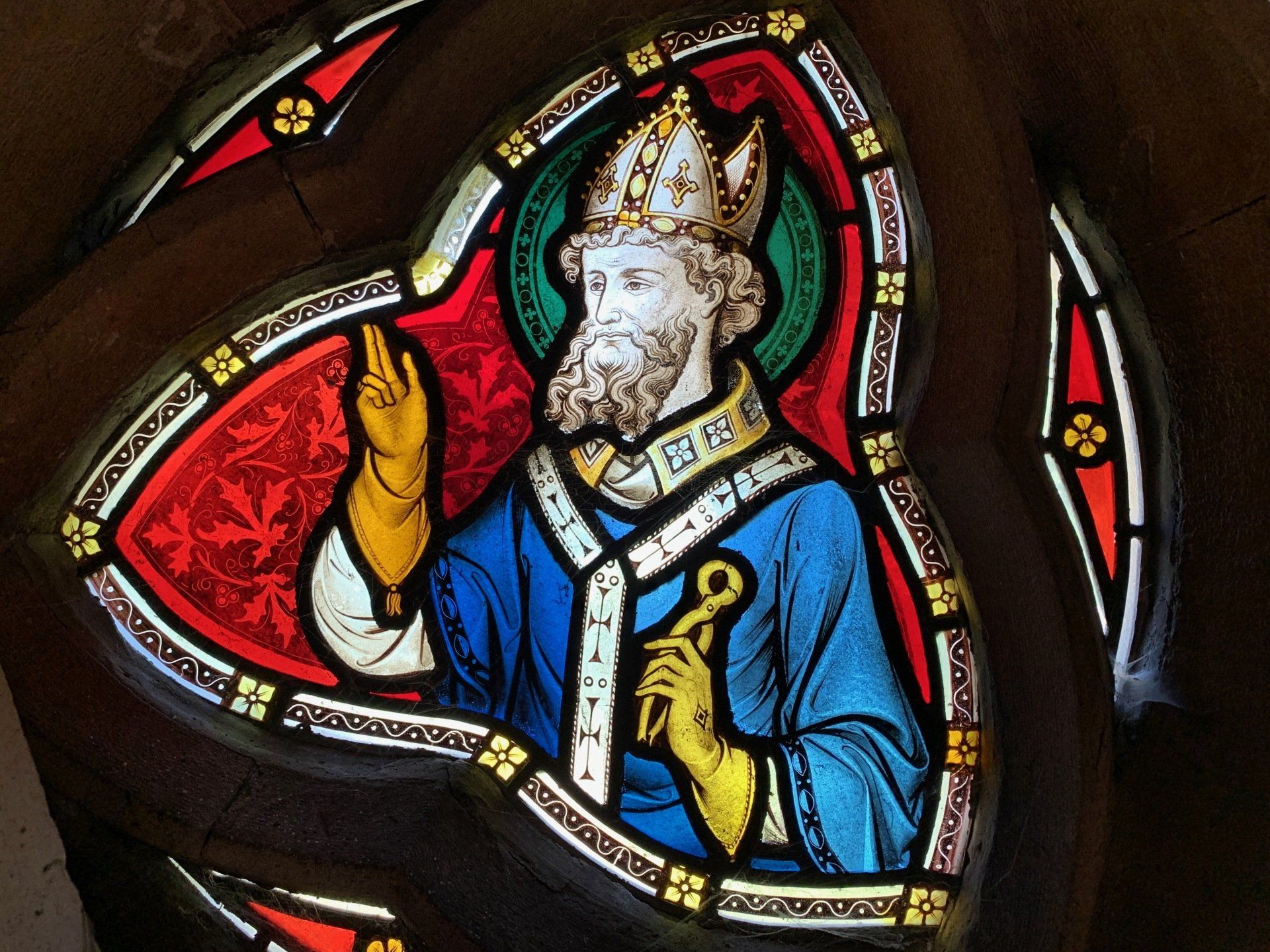
By Fr Brendan Thomas
•
19 May, 2020
Today is the feast of Saints Dunstan, Ethelwold and Oswald. It has been said that no period in English history is more unfairly neglected than the tenth century. It is easy to forget the significance of the people and events of this time in the 'birth of the English nation'.
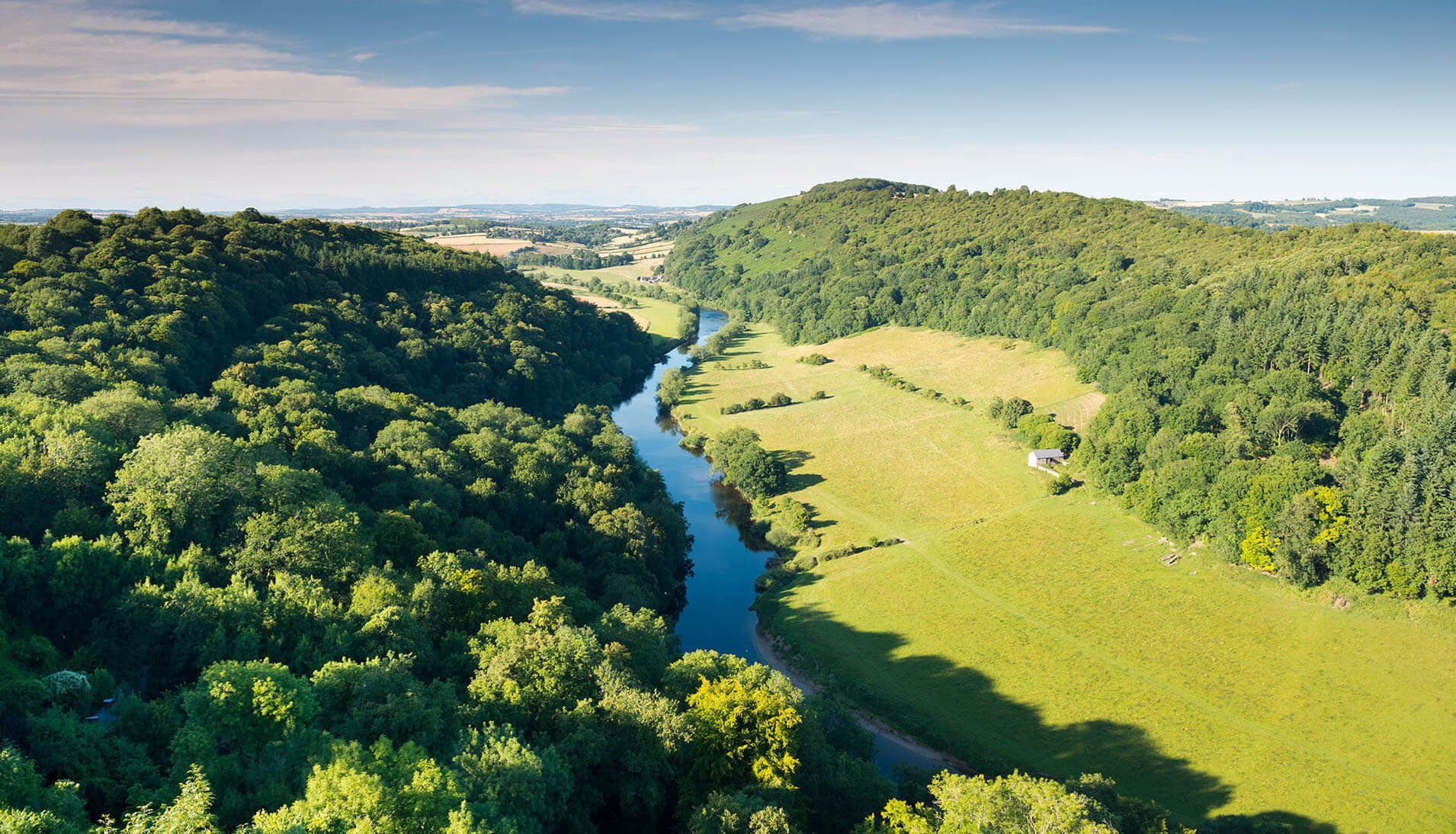
By Abbot Paul Stonham
•
16 Jul, 2018
Most people think of Herefordshire as being that quintessential English county of apple orchards, hop fields, black and white villages and herds of Hereford cattle. It is also a border county that looks out from the Black Mountains towards the Malvern Hills, from the wild crags and valleys of Wales to the rolling countryside of England and is cut in half by the River Wye. It is famous not only for its 250 or more medieval churches, among them the magnificent Hereford Cathedral, but also for an equal number of Norman castles, many of them reduced to almost nothing today, and a large section of Offa’s Dyke. It is a county that from its earliest days was the meeting place of two worlds, the Celtic and the Welsh on the south side of the river and the Mercian, the Saxon, the Norman and the English on the north. The ancient Diocese of Hereford extended beyond the present English and Welsh border into Wales. Go to Newton St Margaret’s , a tiny church with a glorious rood screen, and you will find a notice in the vestry on the duties of church wardens written in Welsh, the language commonly spoken here well into 19th Century. Visit any cemetery south of the Wye and, with the exception of English settlers, you will not find a single gravestone that does not bear a Welsh surname. It is no anomaly that Herefordshire should still be part of the Archdiocese of Cardiff: the historical links run deep, the cultural links still strong. Let us go back to the beginnings of Christianity and of Church organisation in the three ancient counties that made up the Archdiocese until Swansea, Neath and Port Talbot were snatched away to create the new Diocese of Menevia in 1987. Yes, there were Christians here in Roman times and the martyrdom of Saints Julius and Aaron at Caerleon at the beginning of 4th Century bears witness to this. The Venerable Bede, following Gildas, mentions them in his Ecclesiastical History and they are to be found in the Roman Martyrology. However, when dealing with the lives of the great and lesser saints of 6th and 7th Century South Wales, it is far more than the mists of time we have to contend with: there are the fantasies, elaborations and exaggerations of the medieval chroniclers and a certain vying for influence and authority among the various dioceses and their incumbents. Above all, the Norman Conquest brings with it an ethnic cleansing that affected the Church more than any other institution.

By Abbot Paul Stonham
•
15 Jul, 2018
In 1916, with the publication of the Apostolic Letter “Cambria Celtica”, Pope Benedict XV created the Ecclesiastical Province of Cardiff, transferring the Episcopal Seat of Newport to the City of Cardiff, capital of Wales, and making the Diocese of Menevia suffragan to the Archiepiscopal See of Cardiff. The beautiful church of St David was to be the new cathedral of the Archdiocese, while the Episcopal Cathedral at Belmont was to remain co-cathedral with a Monastic Chapter and a Cathedral Prior. Unique in the Church, the Archbishop of Cardiff would have two chapters, one Secular and the other Regular and two Cathedral Churches. This extraordinary arrangement, fraught with difficulties and misunderstandings, was only to last four years, for in 1920, with the Papal Bull “Praeclara Gesta”, Belmont was raised to the status of an autonomous Abbey within the English Benedictine Congregation, thus ending its 60 or so years of service as a cathedral. The first Archbishop was to be James Romanus Bilsborrow, Bishop of Port Louis, Mauritius, and a monk of Douai, who would only stay four years at the helm of the new Archdiocese, ill health forcing him to resign. You might well ask how a flourishing archdiocese came to be created in a part of the British Isles so devoid of Catholics only 75 years earlier, when Bishop Joseph Thomas Brown, a monk of Downside, was appointed Vicar Apostolic of the Welsh District in 1840. This was the work of but two men, Brown himself, who is buried under the window of the Welsh saints in the North Transept of Belmont, and Bishop John Cuthbert Hedley, a monk of Ampleforth, whose monument is next to Brown’s, but whose bones lie buried at Cathays Cemetery, Cardiff. The amazing story of the Catholic Church in Wales in modern times surely belongs to these two great men, monks and bishops truly worthy of our praise and thanksgiving. Between them they built up the Church in this land and provided for the needs of a growing Catholic population, most of whom were poverty-stricken immigrants from Ireland, Italy and other parts of the United Kingdom. Bishops Brown and Bishop Hedley in earlier times would most certainly have been canonised as the Apostles of Wales.
Our Monastery
Belmont AbbeyRuckhall LaneHerefordHR2 9RZ
Phone: 01432 374710E-mail:
Enquirieswww.belmontabbey.org.uk
HOW TO FIND US
Copyright 2018 © Belmont Abbey. All rights reserved | “Belmont Abbey General CIO (registered charity number 1190035).
Principal office: Belmont Abbey, Ruckall lane, Hereford HR2 9RZ.”
Principal office: Belmont Abbey, Ruckall lane, Hereford HR2 9RZ.”
Website developed by:
Every Day Christian Marketing Ltd

